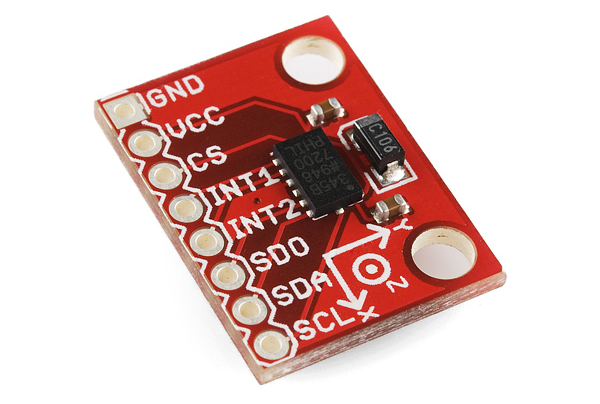Accelerometer Basics
Contributors:
 Toni_K
Toni_K
What is an Accelerometer?
Accelerometers are devices that measure acceleration, which is the rate of change of the velocity of an object. They measure in meters per second squared (m/s2) or in G-forces (g). A single G-force for us here on planet Earth is equivalent to 9.8 m/s2, but this does vary slightly with elevation (and will be a different value on different planets due to variations in gravitational pull). Accelerometers are useful for sensing vibrations in systems or for orientation applications.
Suggested Reading
If you are unfamiliar with any of the topics below, you may want to read up on those before moving ahead with accelerometers.
Serial Peripheral Interface (SPI)
SPI is commonly used to connect microcontrollers to peripherals such as sensors, shift registers, and SD cards.
Analog to Digital Conversion
The world is analog. Use analog to digital conversion to help digital devices interpret the world.
Pulse Width Modulation
An introduction to the concept of Pulse Width Modulation.
Logic Levels
Learn the difference between 3.3V and 5V devices and logic levels.
I2C
An introduction to I2C, one of the main embedded communications protocols in use today.
